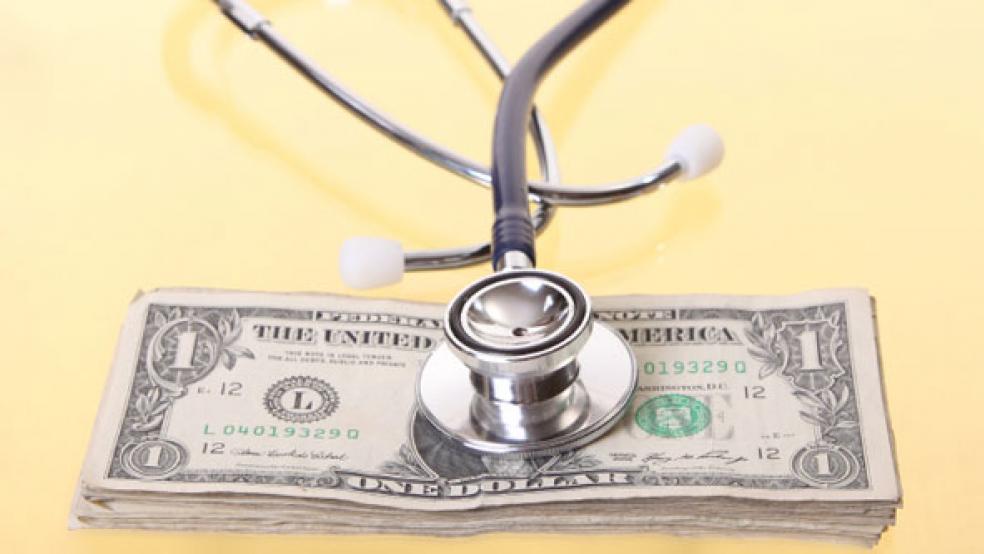After years of health care spending growth hovering at record lows, federal actuaries say health care spending is expected to surge in the next decade as the economy strengthens, the population ages and millions of new people gain health insurance through the Affordable Care Act.
In its annual report published in Health Affairs, the Office of the Actuary at the Centers for Medicare and Medicaid Services (CMS) projected Wednesday that health care spending for 2014 will increase by 5.6 percent and by an average 6 percent for 2015 through 2023. The projections are consistent with the projected baseline scenario in the 2014 Medicare Trustees Report.
Related: Obamacare Boosted Health Care Spending and GDP
The uptick comes after health care spending growth for 2013 is projected to be at a near record low level of 3.6 percent –the fifth consecutive year of slowed growth-due to the sluggish economic recovery, as well as severe federal budget cuts brought on by sequestration and a combination of other factors.
The federal actuaries say the most important driver to boost health spending in the next few years is the strengthening economy, though an aging demographic as well as more people getting treatment through their newly acquired health care plans under Obamacare will also contribute to a faster rate of health care spending.
“Analysis of historical trends tells us that health care spending tracks with economic growth; so as the economy is anticipated to improve over the next decade, health spending growth is projected to grow faster,” Andrea Sisko, CMS economist and lead author of the study.
By 2023, the actuaries project that health care spending will make up 19.3 percent of nominal gross domestic product (GDP), up from 17.2 percent in 2012.
Related: Recession Keeps Health Care Spending in Check
Still, health care spending is expected to grow slower than it did in the past two decades (between 1990 and 2008) when the average spending growth rate was 7.2 percent. At that time, health spending grew 2.0 percentage points faster than GDP, in the next decade its expected to grow 1.1 percentage points faster, the report found.
The slower pace of spending can be explained by a number of factors—including, of course, the economic climate.
“Typically following a recession, the level of job growth, and whether folks have become unemployed, contribute to their decisions to forego care,” Sisko said in a press briefing on Wednesday.
The increased cost-sharing requirements and higher deductible health insurance plans have also contributed to projected slower growth forecasts.
Related: Health Care Spending Slows to Historic Lows
John Poisal, deputy director of the National Health Statistics Group at CMS explained that higher deductible plans that require people to pay more out of pocket tend to discourage consumers from seeking treatment that they might otherwise have sought.
Another reason for the slowdown in spending growth, the report explained, is that Medicare use has slowed in the last three years. However, CMS officials expect a slight rebound over the next ten years as Baby Boomers age and begin requiring more costly care. Still, Poisal said it won’t likely get to the level it was at in the 90’s.
“We do anticipate that spending growth in Medicare will accelerate but won’t reach the highest levels of growth that we’ve seen in the past,” Poisal said.
Top Reads from The Fiscal Times:
- The Israeli Solution for Kurdistan
- Obama Makes the Middle East Our New ‘Quagmire’
- If Kurds Fall, Chaos in Iraq and Abroad to Follow


